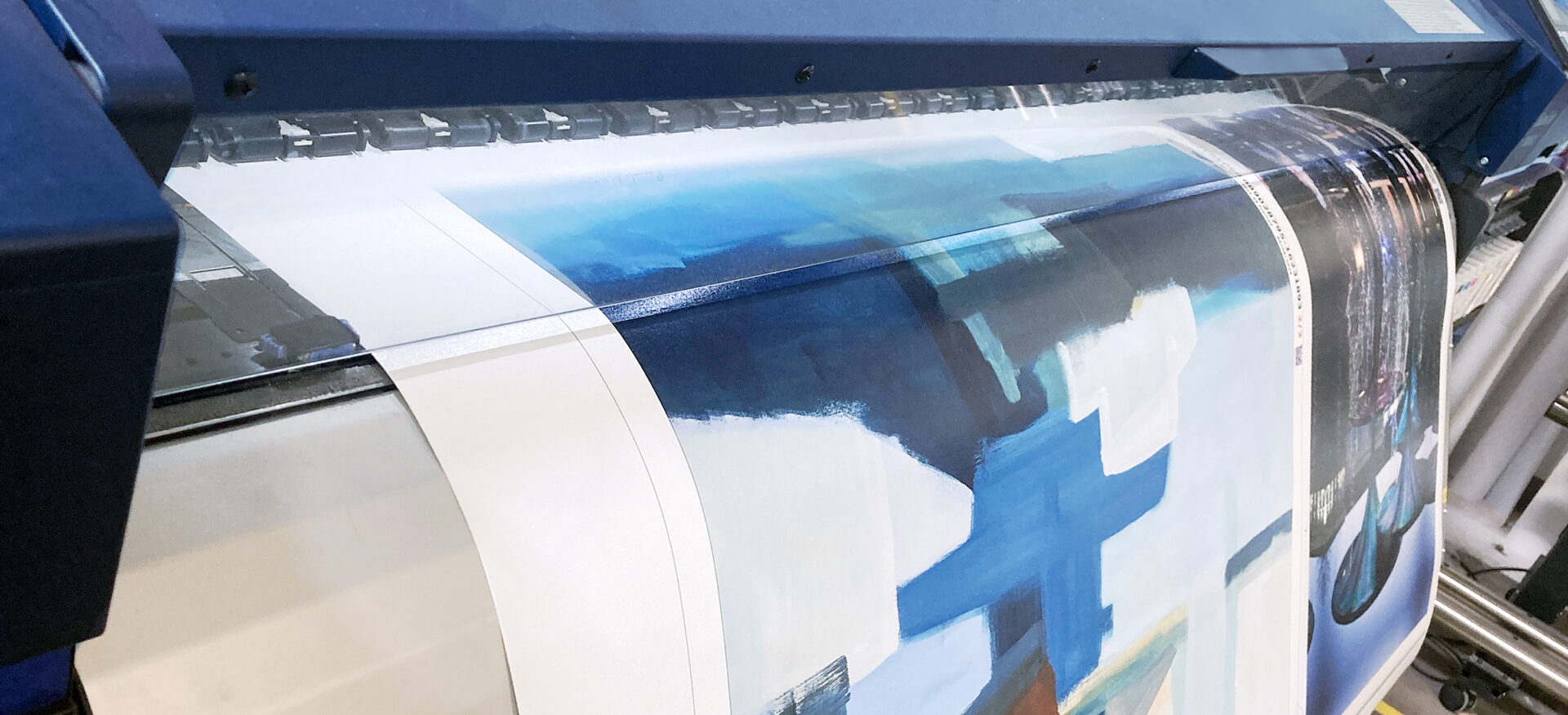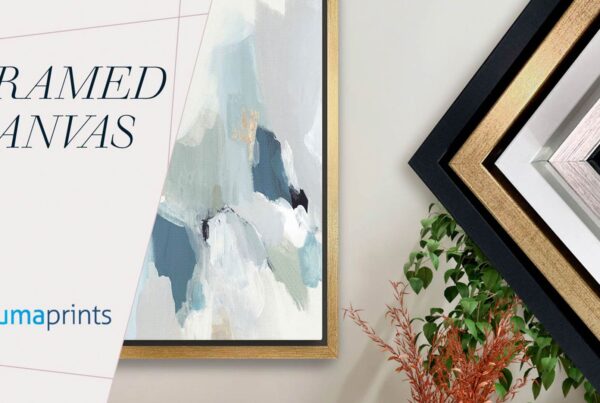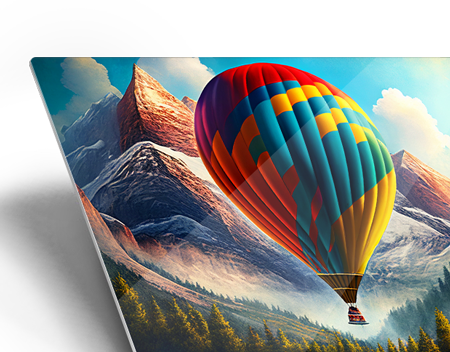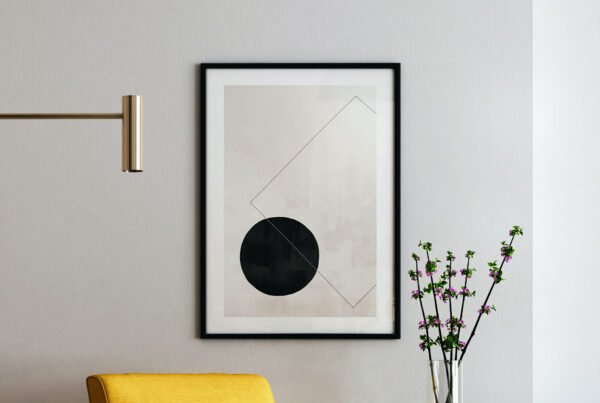Canvas printing is a popular way to display photographs, artwork, or other images on a canvas material. This type of printing produces a high-quality, long-lasting image that can be hung on a wall like a traditional painting. Many people choose canvas printing for family photos, wedding pictures, or even to showcase their own artwork.
If you’re interested in canvas printing but not sure where to start, there are a few important things to consider.
Table of Contents:
- Why should I use custom canvas prints?
- How can I print my art on a canvas?
- How do I reproduce large canvas paintings in digital prints?
- What resolution is needed to print on canvas?
- How do I choose the perfect image for my canvas print?
- How would I make copies or prints of my original canvas painting?
- Canvas print Vs Photo Prints?
Why should I use custom canvas prints?
Custom canvas prints are a great way to highlight your favorite photographs, artwork, or designs in a unique and personalized way that can fit nicely into your home’s interior. Here are some of the many reasons why you might want to consider a custom canvas print:
Personalized
With custom canvas prints, you have the freedom to choose the image, color scheme, and even size that fits your style and preference. Create a one-of-a-kind piece that reflects your personality in an elevated fashion.
What’s great about canvases is that they are timeless pieces that won’t go out of style and can stay with you for years to come. Unlike other personalized items, canvases won’t undergo so much wear and tear like shirts or mugs for example.
Durable
Canvas prints, when made with quality materials, are known to last for years, even decades. They are resistant to fading and wear and tear, making them a great investment for your home or office. Archival inks and a protective coating will help your canvas stay vibrant and as new as the day you bought it. Additionally, proper wood stretchers will keep your canvas taunt and prevent sagging overtime thanks to keys that can be added over time if needed.
Easy to Hang
Canvas prints are not only lightweight, but they are very easy to hang. You don’t have to worry about a complicated installation process or running risk of damaging your walls. Simple nails will be sufficient and even damage-free hanging hooks could hold your canvas. Some canvas have strong and durable hanging wire for you to hang with which usually come in metal, otherwise, there are sawtooth hangers or even the stretcher frame itself.
Professional Look
If you’re looking for a touch of sophistication to your home or office, canvas prints have that professional, high quality look that can enhance your space.
You can find canvases in museum galleries and upscale interiors so they help emulate a luxurious feel to any room.
Affordable
While custom canvas prints look and feel luxurious, depending on size and thickness, there are plenty of affordable options available. And with choosing any design you want, you can transform your space with something custom-made on a small budget with canvas prints.
Lumaprints offers plenty of canvas sizes at affordable prices which you can check out here: https://www.lumaprints.com/canvas-prints/
How can I print my art on a canvas?
Printing on canvas involves printing your artwork onto a canvas using a specialized printer that uses pigment ink. This method is great for digital art, photographs and even reproductions of non-digital artwork. When using the right materials for printing, you can have a long-lasting and high quality print. There are plenty of options to choose from but Lumaprints is a great contender as we specialize in printing canvases and work with both artists and large retail partners. Our canvases are made with thick solid wood stretchers that won’t bend or warp over time and we print using top of the line archival inks to ensure longevity for your print.
To digitize your art, simply take a well-lit picture or use a professional scanner. Depending on the size, taking a picture might be the preferred method. When taking a picture, make sure you’re in a well-lit area like a studio or even outside during the day.
How do I reproduce large canvas paintings in digital prints?
For large canvas paintings, turning them into digital prints may seem challenging but with these steps, you can capture your large canvas paintings with ease:
- Photograph or scan the original piece – For a high quality digital reproduction of your work, you will need a high resolution photo or scan of it. Avoid shadows or unwanted glares by taking a photo in a well-lit area.
- Edit the file digitally – Now that you have scanned or photographed the image, you can edit the image and prepare it for printing. Using any image editing software, you can edit the image to have it as close to the original as possible. Toggle contrast if you need certain colors to differentiate more, adjust brightness if the image is too bright or too dark, change the saturation to help colors pop. Start with small increments, referring to the original physical image for side-by-side comparison.
- Preparing the print size and resolution – First situate the resolution or DPI of the image before resizing, this will help the image size up and down without pixelating too much. 300 DPI is a standard high-quality resolution you can default to for most printing needs. Once you adjust the resolution, you can then resize the image to the print size of your choosing. For optimal sizing, try to stay around print sizes close to the original size or smaller. For example, an 18×24 original piece can go up in size at 30×40 but may decrease in quality if doubled in size.
- Select a printing service – When looking for a printing service, find one that has giclee or high-quality printing. A reliable printer will have information readily available on their print process and the printing method. Lumaprints uses quality printers and inks and prints onto art papers and canvas material. You can see our printing quality on our website.
Printing the reproduction – Once you select a printing service, upload your image onto their platform. Canvas options are available if you want to accurately reproduce your large painting.
What resolution is needed to print on canvas?
The general rule of thumb for printing is that the bigger the print size, the higher the image’s definition should be.
If the image’s resolution is low (72 DPI for example), the image will become pixelated as you go up in size. To achieve a high quality canvas print, we recommend 200 DPI for all sizes, small and large. That way, you do not have to worry about adjusting DPI per print size.
Here are some examples of recommended resolutions to give you a relative idea of what sizes your image can print as:
| Size (in) | Resolution (200 DPI) |
|---|---|
| 8×10 | 1600×2000 |
| 11×14 | 2200×2800 |
| 16×20 | 3200×4000 |
| 20×24 | 4000×4800 |
| 24×36 | 4800×7200 |
To preview how your image file will look once printed, you could use our one-inch method:
- Open your image on any image editing software such as Photoshop or GIMP.
- Make sure the software’s rulers are visible.
- Convert your image to 200 DPI (without changing the dimensions) and then change the image’s size to the dimensions you want printed. Be mindful not to skew your image, this can be done by linking width and height so they are always connected.
- Lastly, use a physical rule to line the image editing software’s rule so they match in scale. You can size up and down the ruler to scale using the zoom feature in your software. Once they line up inch by inch, you will be able to see how the image may look in quality once it is printed.

Lookout for blurriness in the resized image, especially in places where there are small details. Depending on the image, some parts may look crisp and defined but other parts will look blurry. Be sure to look over the entire image before printing it. Check out our FAQ section for more information on image file quality.
How do I choose the perfect image for my canvas print?
Choosing the perfect image for a canvas can be subjective and can vary depending on the person but we can help you reach a decision:
- Purpose: Think about the space and place the canvas will call home and the message you want to convey with the imagery. Will it be a show-stopper or an accent piece to the space at large? Knowing it’s placement and purpose can help you have a better understanding of what you want
- Size: Two things are important for size, the size you want and the size your image can be. For larger prints, you will need to make sure the image has a high enough resolution so it doesn’t become pixelated or blurry. You can also crop the image to the shape to fit your space better. For example, if your image is rectangular and you want a more panoramic image, simply crop it from the top and/or bottom so it fits the dimensions you want.
- Colors: The image’s colors should suit the space and complement the decor as well. If you have a space full of neutral colors, maybe a pop of color with your canvas may help bring life into the space. On the other hand, if your room has a lot of color and design, maybe a more neutral canvas image may help provide some breathing space for the room.
- Personal Preference: When looking for an image, make sure you choose something that speaks to you and reflects your personal taste and style. Ultimately, you want to enjoy it every time you walk by it. It could be a beloved photograph of a special moment, a piece of art that you love, or even a scene of nature that brings you peace.
- Print Quality: Make sure that the image you choose is of high quality to be printed on canvas. You can do this by checking the resolution and DPI. An image with a high resolution and DPI will result in a better-looking canvas print.
When you take these factors into consideration, you can find an image that is perfect for your canvas print and will bring joy and personality to your space.
How would I make copies or prints of my original canvas painting?
When making copies or prints of your canvas paintings, there are several methods to consider:
- Photography: Take a high-quality photograph of your painting using a digital camera or a phone with a good quality camera. Ensure that the lighting is even and the painting is properly aligned. Places to consider for taking the photo are in a well-lit studio or outside when there’s consistent overcast in the daytime. Afterwards, you can use an image editing software to adjust the brightness, contrast and colors to replicate the original image as closely as possible.
- Scanning: If your painting is small enough, utilizing a printer is a great way to create a digital copy. Make sure the scanner bed is clean, free of any lint or dust so that your image prints free of impurities. Some scanning options to consider include saving the image in PNG, JPEG or TIFF format, 200-300 DPI resolution, and full-color.
- Giclee Printing: Giclee printing is a high quality, fine art print made using a top of the line specialized inkjet printer. You can take your painting or digital file to a professional printer that provides giclee printing, and they will be able to print a high-quality reproduction of your painting. You can also ask for a proof before printing the final version to make sure you are satisfied with the quality. Lumaprints offers giclee printing on canvas and other printing materials such as fine art paper, metal, and peel & stick. Our canvas printing not only focuses on the quality of the print, but also the quality of the stretcher bars and canvas material.
Whichever method you decide on, make sure to carefully look over the final product to make sure that it accurately reflects your original painting.
Canvas print Vs Photo Prints?
Canvas prints and photo prints are two different types of printing mediums. Here are their key differences:
Canvas Prints:
- Durable woven or canvas-like material
- Protective coating available
- Options: Unstretched/stretched onto wooden stretchers
- Customizations: Framing, embellishments, depth thickness
- Impression: Professional, gallery, upscale
Canvas prints are an ideal option for home decor, especially if you are looking to elevate the appearance of your room. Canvases are often found in museums and galleries so that artsy feel they have can be brought into your space. And if you want your place to feel and look luxurious and expensive, canvas prints are a great way to make that impression. For an added bonus, you can frame a canvas with a custom frame. There are many frame styles that can match you and your home decor, from simple/modern to classical/ornate.
Photo Prints:
- Thin with different textures available: Hot press, cold press, matte, glossy
- Glossy coating optional
- One dimensional/flat
- Customizations: Framed under glass/acrylic, matboard
- Impression: Professional, minimalistic
Photo prints or paper prints are also another option you can consider. One of their appeals is that they come in different textures and suit different images depending on the genre, type and style. Examples include glossy prints being suitable for photography and cold press paper prints being more suited for painted illustrations. Whichever paper you decide on for your image, most, if not all, photo prints will look better framed and under glass/acrylic. And to give your paper a professional edge, add in a matboard, which is a cardstock paper with a window-like cutout placed in between the frame and the print.
Learn more: Canvas or Paper Print
Both canvas prints and photo prints are great options but depending on your image and look you are going for, you can hopefully find your choice between the two. If you’re interested in either canvas printing or photo printing, or even both, Lumaprints has these two options and more! We provide high-quality printing on canvas and fine art paper prints as well as metal printing and peel and stick. If you’re considering these types of prints, check out our product pages to learn more and order prints of your choice.






Do you do dropshipping . I am looking for more than likely within Australia more often than not
Hi Siren!
Thank you for your interest in utilizing our services 🙂 At this moment in time, we primarily ship within the US where we print and manufacture our products.
This is due to our products safety during transportation and the import costs that are less than ideal for our clients.
Best,
Lumaprints Marketing Team